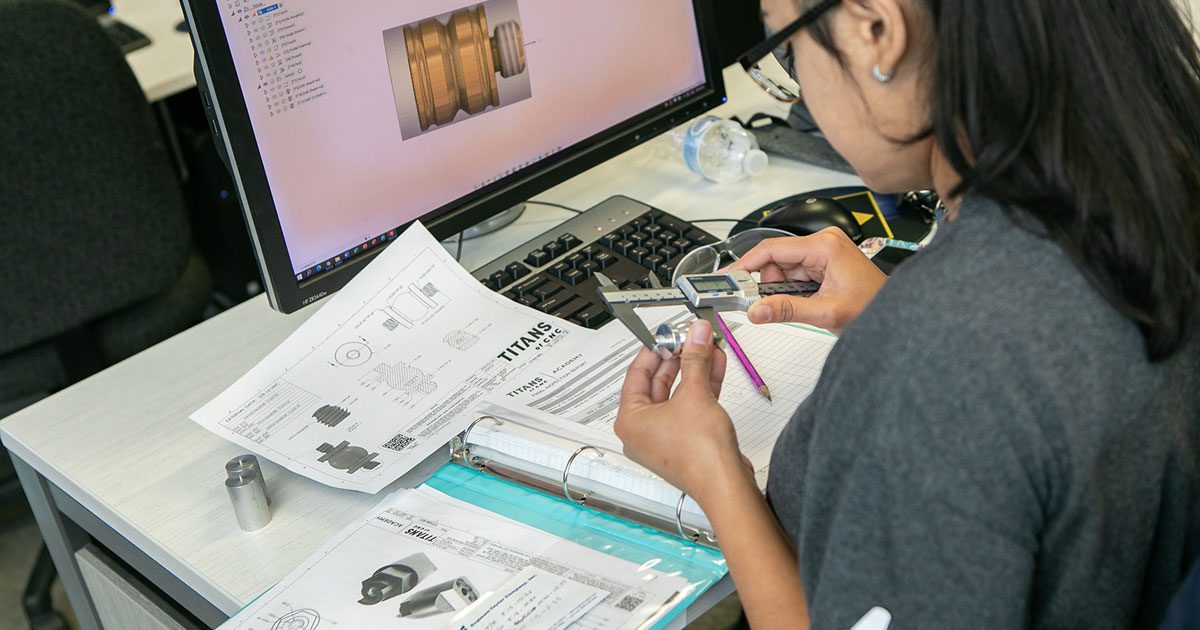1. Build a Solid Foundation: A strong foundation in mathematics and computer science serves as the cornerstone of a CNC programmer’s education. High school coursework in algebra, geometry, and trigonometry lays the groundwork for understanding geometric concepts and mathematical calculations essential to CNC programming. Additionally, familiarity with computer programming languages such as C++ or Python provides a solid framework for grasping the logic and syntax of CNC programming languages.
2. Pursue Technical Education: Formal technical education programs, such as vocational courses or associate degree programs in machining or computer-aided manufacturing (CAM), offer specialized training in CNC programming. These programs cover a range of topics, including blueprint reading, CAD (Computer-Aided Design) software, CNC machine operation, and programming languages such as G-code or CAM software. Hands-on experience with CNC machinery and software is integral to gaining proficiency in programming techniques and troubleshooting common issues.
3. Master CNC Programming Languages: Proficiency in CNC programming languages is essential for translating design specifications into precise machining instructions. G-code, the most widely used CNC programming language, consists of alphanumeric codes that dictate tool movements, spindle speeds, and feed rates. CAM (Computer-Aided Manufacturing) software provides an intuitive interface for generating G-code programs from CAD designs, allowing programmers to visualize machining operations and optimize toolpaths for efficiency and accuracy.
4. Understand Machining Processes: A deep understanding of machining processes and techniques is crucial for effective CNC programming. Machinists must comprehend cutting tool geometry, materials properties, and machining parameters to select the appropriate tools and optimize machining operations. By understanding the interplay between cutting forces, tool wear, and surface finish, CNC programmers can fine-tune programming parameters to achieve optimal results and minimize production time.
5. Develop Problem-Solving Skills: CNC programming requires adept problem-solving skills to troubleshoot programming errors, optimize toolpaths, and address mechanical issues that may arise during machining operations. Programmers must possess a keen attention to detail and the ability to think critically to identify and resolve issues efficiently, ensuring smooth production workflows and maintaining quality standards.
6. Stay Updated on Technological Advances: The field of CNC programming is constantly evolving, with advancements in software, hardware, and machining techniques reshaping the manufacturing landscape. Programmers must stay abreast of these developments by attending training seminars, participating in professional organizations, and pursuing continuing education opportunities. By embracing innovation and adapting to change, CNC programmers ensure their skills remain relevant and competitive in the ever-evolving industry.
Conclusion: Becoming a CNC programmer is a journey of continuous learning, skill development, and dedication to excellence. By building a solid educational foundation, pursuing technical training, mastering CNC programming languages, understanding machining processes, developing problem-solving skills, and staying updated on technological advances, aspiring programmers can navigate the path to mastery with confidence and proficiency. As they harness the power of technology and precision, CNC programmers play a pivotal role in shaping the future of manufacturing with ingenuity, efficiency, and precision.







